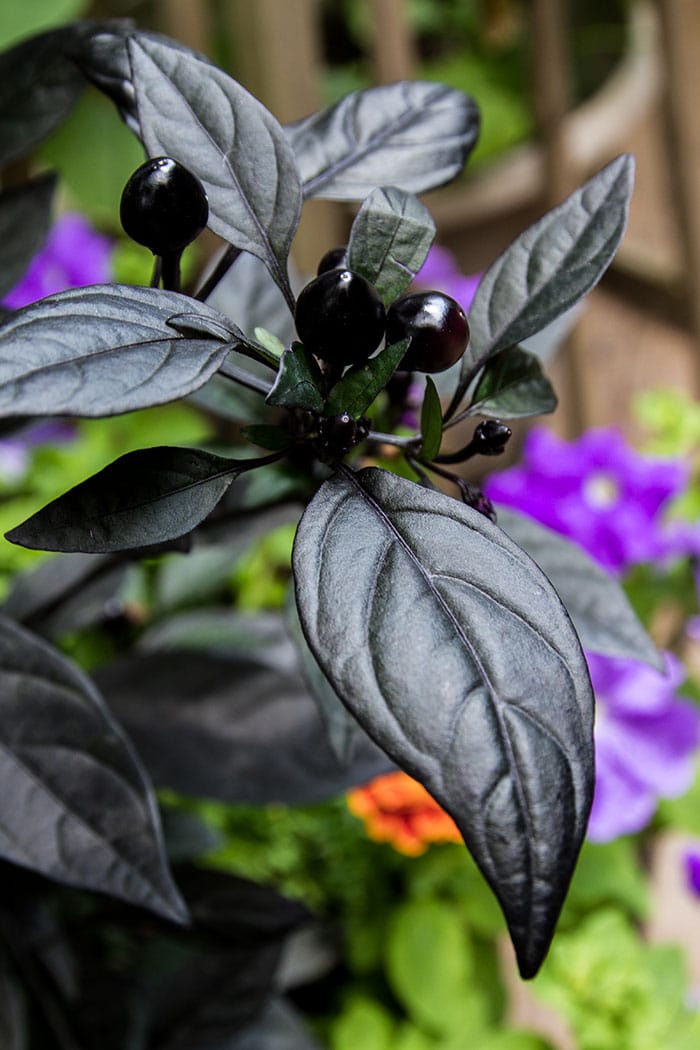
Does anyone remember my plan to grow more plants with dark foliage this summer? I did acquire several and among the darkest is ‘Black Pearl’ pepper (Capsicum annuum ‘Black Pearl’, 18 x 12 inches / 45 cm x 30 cm), an ornamental pepper with edible fruits (if you can stand the heat). ‘Black Pearl’ is sharing a patio container with ‘Sky Blue’ petunias and a couple of orange marigolds that peek out from under its black skirt. Despite the very high temperatures this week, ‘Black Pearl’ never wilted or appeared affected in any way — it just loves heat, and plenty of it!
This is a gorgeous plant with glossy black leaves, and shiny black berry-like fruits that eventually mature to bright red. The black foliage emerges green and quickly turns to the darkest black I’ve ever seen. The colour is produced by large amounts of a particular anthocyanin pigment. Anthocyanin pigments make plant tissues red, purple or black, depending on the accumulation of pigment molecules present. The fruits of ‘Black Pearl’ are also intensely flavoured, producing enough “heat” to register at about 300,000 on the Scoville heat units scale, a measurement of the amount of capsaicin present in plant tissues. (Capsaicin is the ingredient in pepper spray used as an irritant weapon; it’s also effective at keeping African elephants from foraging on crops). That puts it in a category with Scotch bonnet, habanero and Guyana wiri wiri chilis.
The immature berry-size fruits are quite firm, but as they ripen and turn red, they’ll also soften and present a hazard. Even the juices from a soft fruit will burn skin; and if one should fall and be attractive to pets, you can expect quite a reaction. If you can remember not to squeeze the ripe fruits, and keep curious animals away, you should be happy with ‘Black Pearl’. What’s more, you won’t be bothered by elephants.
Unlike other ornamental peppers that aren’t much to look at until their fruits begin to appear midsummer, the intense black foliage of ‘Black Pearl’ is beautiful as soon as it gets out into full sunlight (it will be green in shade). Plants can be grown from seed, started indoors six to eight weeks before the last frost date. ‘Black Pearl’ likes an organic soil with consistent moisture, and as much sun as you can give it for deepest colour. Although my plant receives only three hours of sunlight, the foliage and berries are entirely black.
My household doesn’t usually enjoy incendiary cuisine, but it occurs to me that the ripe red fruits of ‘Black Pearl’ would probably make a wicked red pepper jelly.








